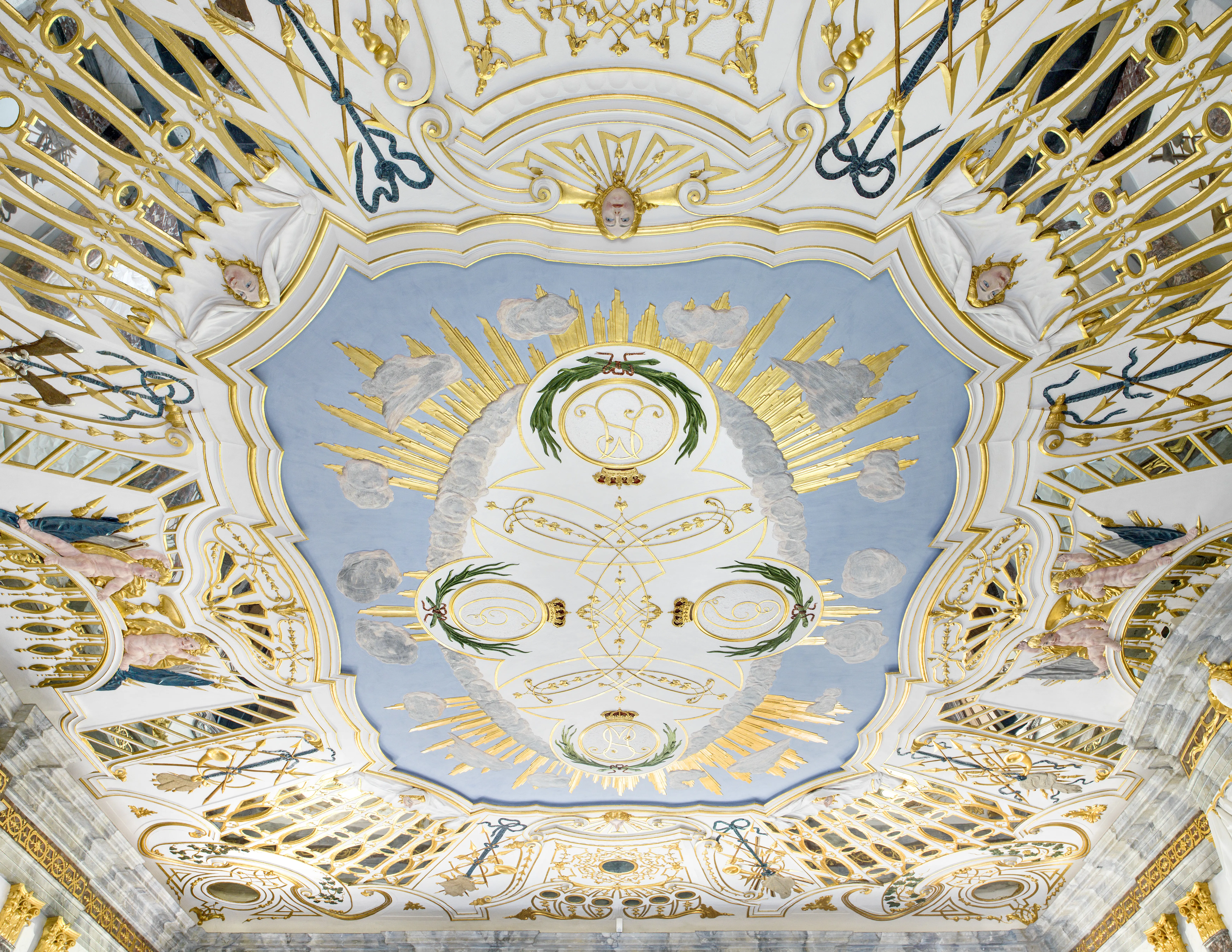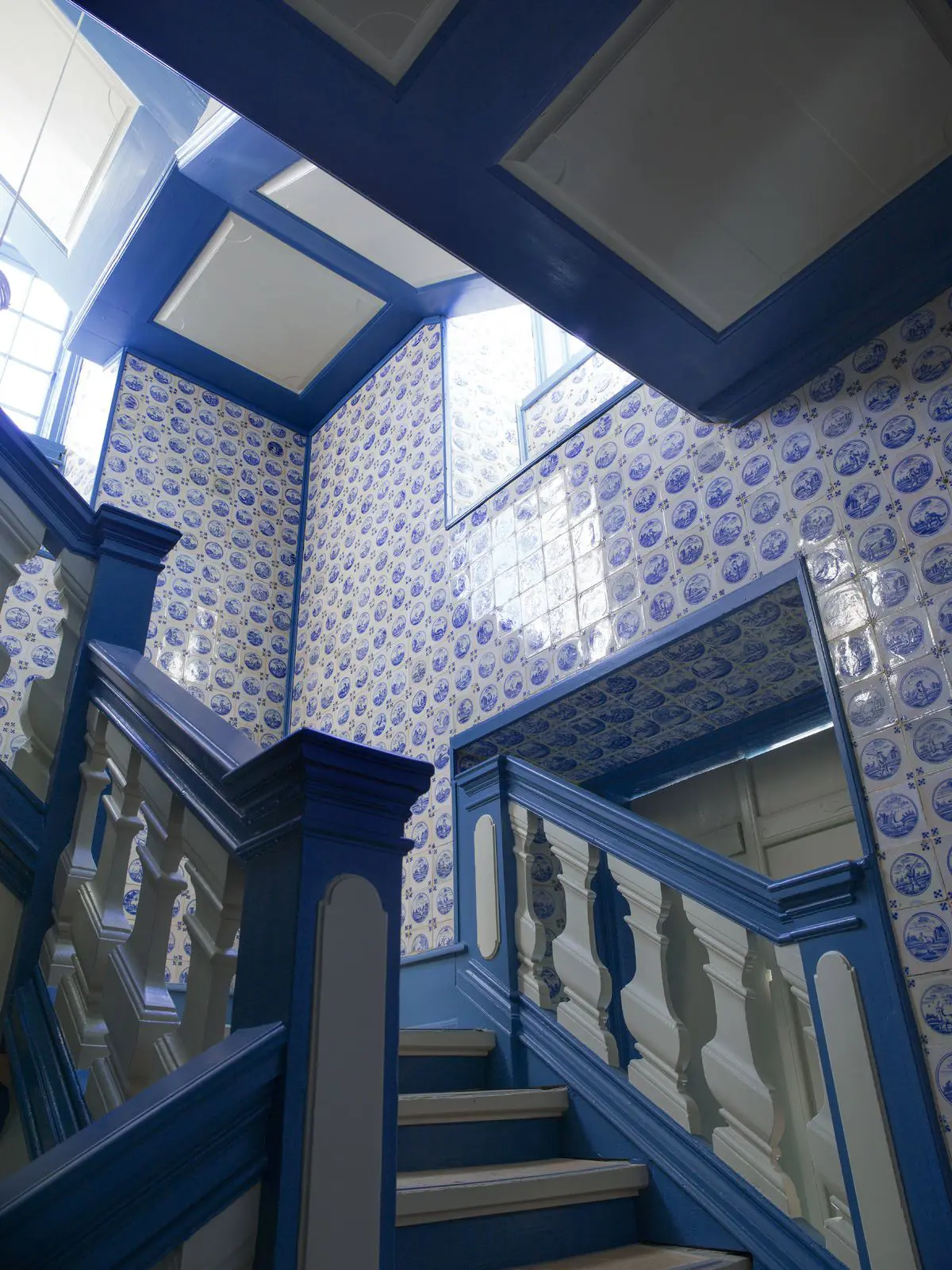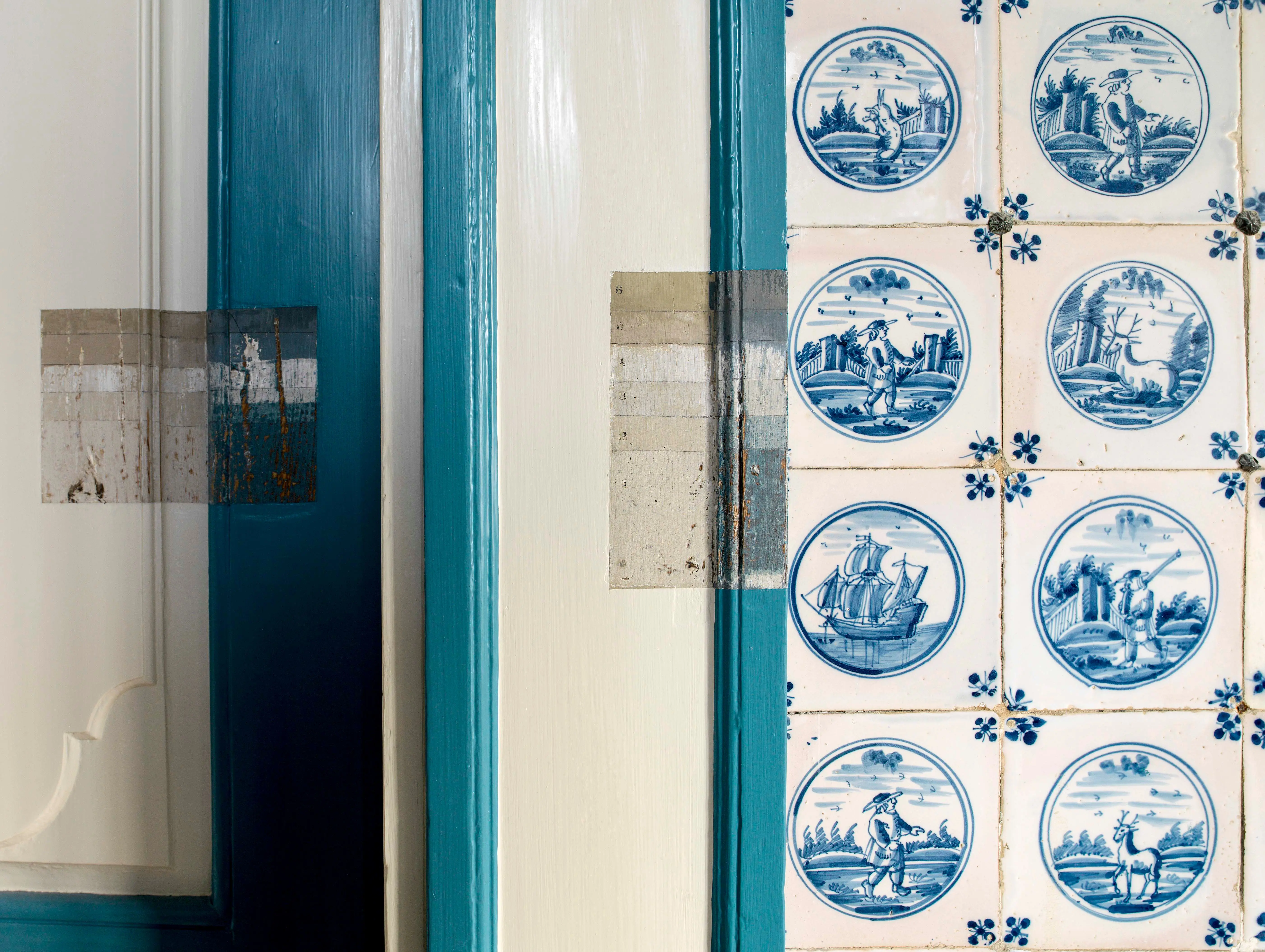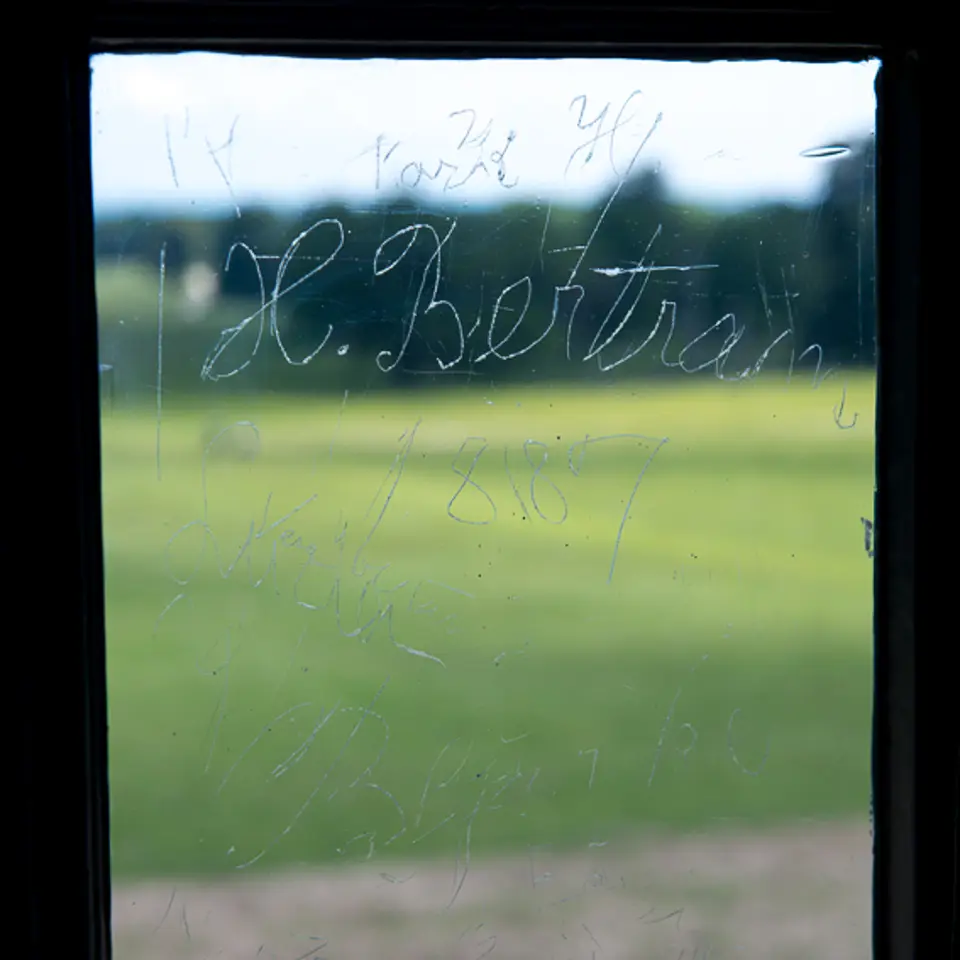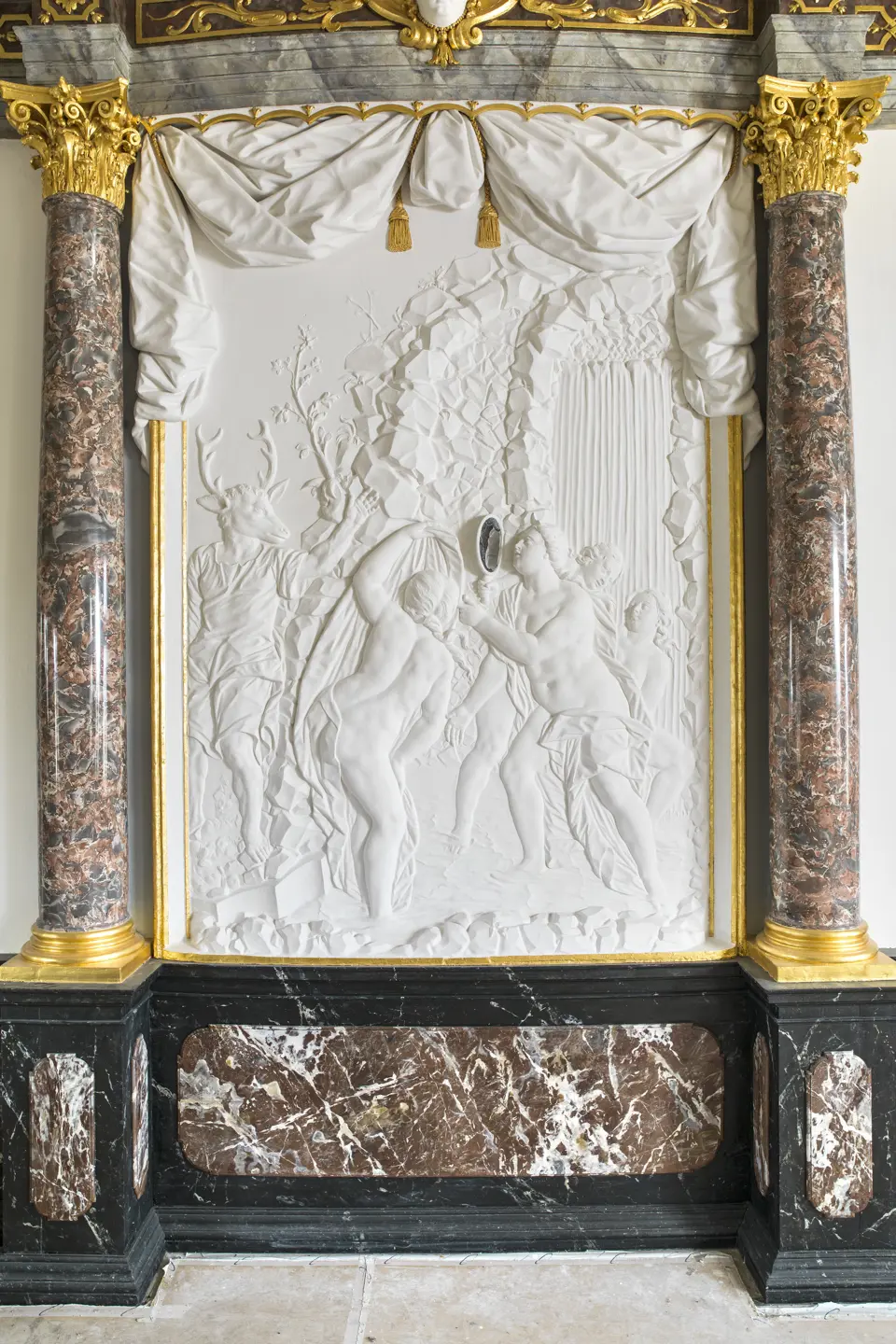The Dining Hall
Step into the era of absolute monarchy The dining hall is decorated in lavish Baroque style, and with exceptional views, it was designed for the absolute monarchs. Today, the hall appears as a time capsule, reflecting the palace's original expression from the 18th century.
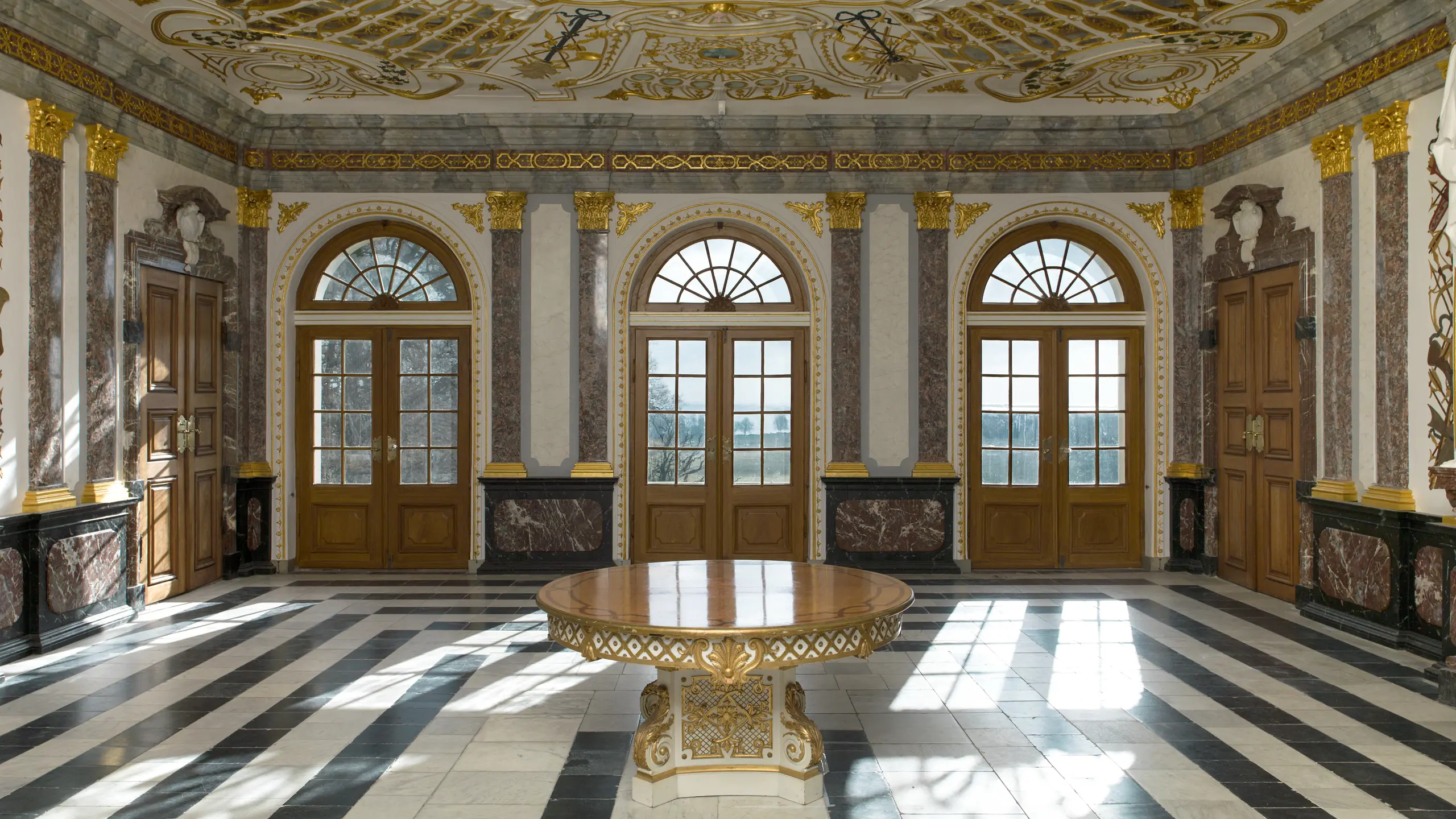
Along with the rest of the palace, the Dining Hall underwent extensive restoration, which was completed in 2013. This brought the original hall back to life.
The Hermitage Table
The Hermitage Palace is inextricably linked to the story of the Hermitage table. A complex mechanism made it possible to hoist the fully set table up from the kitchen in the basement to the Dining Hall.
This allowed the king and his guests to dine 'en eremitage', in solitide, and speak freely without the presence of servants and listening ears. The mechanical table was uninstalled about twenty years later.
Early in the restoration process, which began in 2009, it was debated whether the whimsical device could be recreated. However, there were no drawings or measurements detailed enough to enable a reproduction.
Furthermore, restoring the table would require restoring the vestibule on the lower floor to its original dimensions. Thus, the reconstruction of the Hermitage table was abandoned. Without the necessary documentation and measurements from the original palace, this would have been too drastic an intervention in the palace's interior.
Not just a ceiling
When you step into the Dining Hall, you can't help but tilt your head back to look up at the magnificent ceiling. Positioned directly above where the Hermitage table once stood, the two monograms gaze down over the hall as eternal reminders of Christian VI and Queen Sophie Magdalene. Surrounding the absolute monarch and queen's initials are blue skies and clouds as well as golden sun rays.
The ceiling decoration serves as a symbol of the absolute monarch's power and reflects the contemporary belief that the king was the extended arm of God on earth.
Christian VI and Queen Sophie Magdalene will now forever cast their gaze on anyone who enters the Dining Hall at the Hermitage Palace. Around the monograms is a decorated stucco ceiling with mirror glass, a precious and costly material in its time.
At the Hermitage Palace, there are several inscriptions on walls and windows. Some of them have been left by people who have visited the Hermitage Palace in recent times.
Prince Henrik's mark at the Hermitage Palace
In the Dining Hall, there are signatures from one person with a very special connection to the Hermitage Palace. Prince Henrik was very fond of hunting and nature and was the primary representative of the Royal Family's annual Hubertus Hunt.
The prince etched his name into the windowpanes in the Dining Hall on several occasions. Prince Henrik's visits to the Hermitage Palace were not limited to official events. Anker Andersen, Prince Henrik's former valet, mentions in his memoirs how Prince Henrik sometimes spontaneously decided to spend the night at the Hermitage Palace:
'If Prince Henrik gets an idea, he does not hesitate to carry it out. When the bucks are in rut at the end of summer, he might spend the night at the Hermitage Palace to hear them rutting early in the morning.'
On these occasions, a camp bed would be prepared for the Prince in front of the fireplace in the Dining Hall. In the morning he would wake up to the sound of the red deer stags roaring and fighting for the favour of the females.
